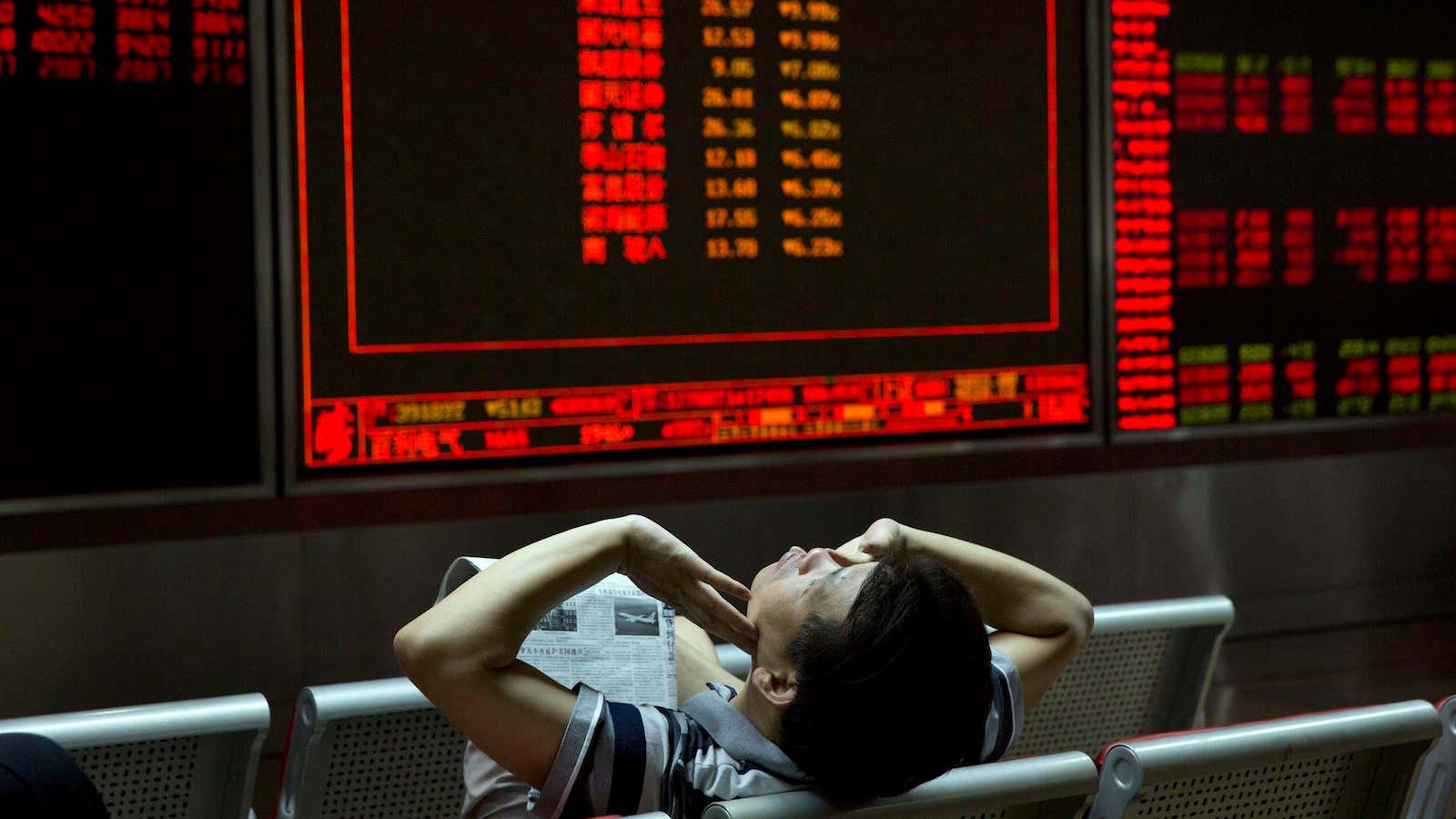What is happening? Why is China—the country that people once thought was the engine of the world economy—tottering so badly?
To answer these questions it is necessary to recognize that China was never the engine of the world’s growth. To be such an engine you have to import more than you export. Then you would create a demand that is filled by other countries, which as a result export more than they import. Importers are the engines in the supply trains of the international markets. Exporters are the wagons, pulled by the demand created by the profligates. Think of what drives liquor markets: barmen or drinkers?
The party
China was never a drinker. It was a barman to the riotous celebration that started in the early 2000s in the United States and several European countries. The next graph shows how the sum of all the current account deficits in the world (the gaps produced when a country imports more than it exports), leapt from about $575 billion in 2001 to $1.6 trillion in 2008.
http://atlas.qz.com/charts/4yTn-vN2
The largest drinker in this party was the United States, which increased its deficit from $125 billion in 1997 to $801 billion in 2006. Notice that the total global deficit defines the size of the international market, which expanded as a bubble and then, sadly, began to come down.
The United States’ deficit peaked in 2006, while the worldwide ones peaked only in 2008, coinciding with the global crisis. They fell sharply, recovered in 2012-2013, and now they are falling again. The party, in other words, seems to be over.
The partygoers and their withdrawal
The next graph reveals who the main drinkers and barmen in this party were, by 2008. On the side of the drinkers, the United States found itself in the company of some countries that acquired notoriety in the aftermath of the party: Spain, Italy and Greece. Not shown because they were too small, but not because they were not enthusiastic, are Portugal and Ireland (I cut the number of countries among barmen and drinkers from 166 to 12 to make the graphs readable.) Now, these were the engines of the party!
Those are the countries that went into dramatic debt crises in the years after 2008. Knowing what happened later to them, you can understand why they had to call the party a night and try to balance their books. Their eventual restraint reduced the size of the international markets. It was sad to see them abandoning the field. Their withdrawal put an end to the party.
Notice who the barmen were. Those who sold their goods to the partygoers included industrial powers China, Germany and Japan and oil dealers Saudi Arabia, Russia and Norway. They were working while the others were having fun.
The next graph shows the situation in 2013. Greece, Italy and Spain had left the party, along with the Portuguese and the Irish. The United States was still there, but in a reduced way; from an $800 billion deficit in 2006, the US scaled back debt to $400 billion in 2014.
Latin charm had not disappeared altogether because Brazil had joined the engines, enthusiastically. As its economy stopped growing, Brazil sucked $81 billion more imports than exports in 2013, and $103 billion in 2014. Its aggressive deficits, however, have not been able to restore the old extravagant magnificence to the party.
The withdrawal of the barmen
As the party fades away, the world’s bartenders are seeing demand for their services decline as well. As shown in the next graph, China’s surpluses, which were once the engines of their own economy, although not of the international one, are coming down. The same is happening to Japan. Of the big barmen, only Germany has increased its surpluses in a decisive way. Now Germany is the country with the largest current account surplus in the world—the top bartender.
The emerging markets
And then there are those who thought that they were the engines and now are realizing they were the cabooses at the end of the train—the commodity producers. Latin American countries, most of which are mainly commodity exporters, have seen their rates of growth going up and down along with the prices of commodities.
As the party dies away, demand for their materials has faded, and their prices have gown down, and export revenues have dropped and growth rates of GDP have collapsed. The fall in these countries is being accelerated by capital outflows. As much as capital came in to them when people thought they were the engines of the world, today capital is flowing out, further depressing their economies.
The other shoe
Now you can sit back, relax and watch as the story comes to its natural end. China is probably going to crash inelegantly. Then, much of Latin America will do the same. Everybody will blame China, but we know better.
